Back to my visit at the Royal College of Art graduate exhibition
Post graduates of the Architectural Design Studio 4 (ADS4) at the Royal College of Art have been exploring the concept of immortality with a series of projects that speculate on the consequences of a society increasingly obsessed with youth and beauty, and denial of death. How will this desire for immortality manifest itself in an architecture that resonates far into the future?
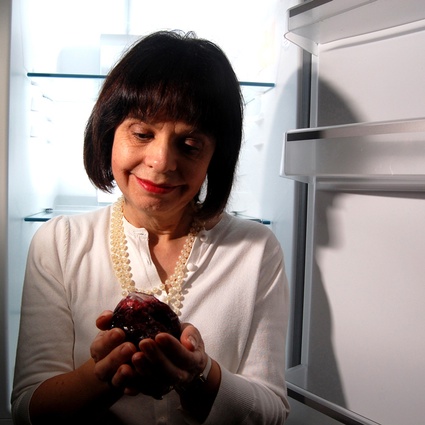
One of the projects of ADS4, A Crime of Passion – Synthetic Murder in our Midst, knits together a scenario made of gene therapy, criminality, love and lurid gossips for tabloids. The twisted and compelling project designed by Rachel Harding revolves around the question: In a Future Dominated by Gene Therapy, How Might Criminal DNA Mend Britain’s Breaking Hearts?
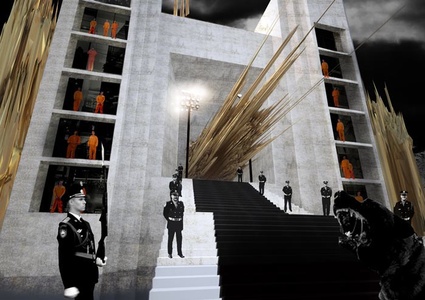 View of the entrance
View of the entrance
The answer to the question lies somewhere at the intersection between two facts that might otherwise seem to be poles apart:
1. In 2003, the British Food and Drug Administration eased the ban on gene therapy trials using retroviral vectors in blood stem cells. Scientists could potentially correct the genes responsible for a life-threatening condition by “smuggling” functional copies into the cells. It is hoped that one day gene therapy studies might be able to find a cure for cancer and hereditary diseases. The therapy doesn’t come without problems and a high cost. However, it is estimated that the cost of decoding a person’s genome is likely to fall from $50,000 to $100 by 2015.
2. Crime groupies or prison groupies who profess their love to notorious criminals. Some even manage to marry them. Ted Bundy, a serial killer who confessed to over 30 murders, is said to have received 200 love letters a day after his conviction. Josef Fritzl seems to attract an equal amount of amorous passion.
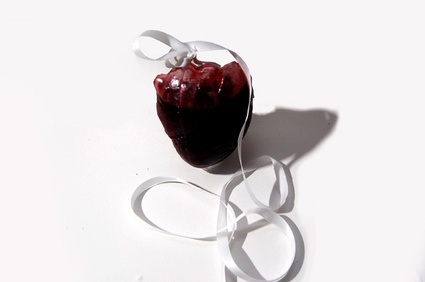
In 2030, the detritus of crime scenes has become a romantic commodity. A health-obsessed public are turning to genetic miracles to cure their many ills. To maintain their medical regimes, each patient requires the regular donation of hundreds of genes from a singular donor, but as our genetic blueprint has become increasingly vital to our lives, so has our aversion to donation. Studies have shown that some 30% of the public surveyed would not accept to donate an organ, and that 89% people would refuse to give their genes for therapies.
Criminal DNA is therefore used to meet public demand for genes. As treatments progress, donor and patient become increasingly homozygous, and peculiar romances begin to form.
This idea of a romance comes from a phenomenon called genetic attraction, in which people with similar genetic codes feel attracted towards each other. It is believed to affect half of the adopted siblings who first meet as adults. The next step according to Harding’s scenario would see women who have undergone gene therapy fall in love with the criminals who have donated their genes to medicine.
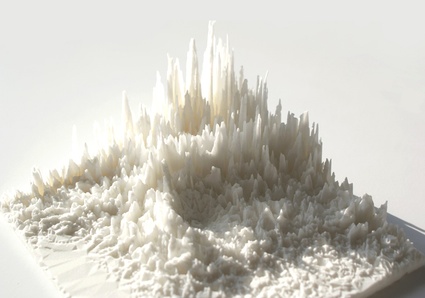 Rapid prototype of 3d lace structure. The hospital is constructed from lace patterns that have been grotesquely extruded to create a fairy-tale castle of treatment rooms and watch towers
Rapid prototype of 3d lace structure. The hospital is constructed from lace patterns that have been grotesquely extruded to create a fairy-tale castle of treatment rooms and watch towers
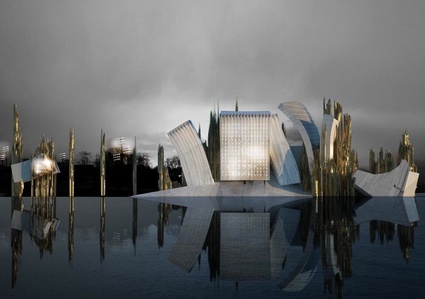 Elevation
Elevation
 Exterior perspective
Exterior perspective
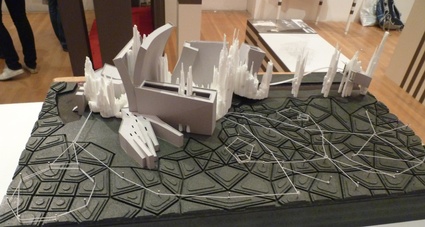 One of the models exhibited at the show
One of the models exhibited at the show
The love would bloom in a series of buildings and structures where patients can receive gene therapies in a hospital of bullet proof mirror glass whilst enjoying romantic but high-security rendezvous with their criminal donors. The convicts would be kept in locked concrete structures whilst the housewives enjoy their genetic honeymoon. Both would be able to date at a distance at specially-designed film theaters and parks. That’s what Harding calls a love resort providing a medical honeymoon of genetic perfection.
In an attempt to revive readership, media group News International would fund Gunpowder Park (that’s the name of the charming resort.) This glorious union of violence and romance creates a sensational community filling red-tops with exclusive juicy crimes and intriguing love affairs to grip the British public.
